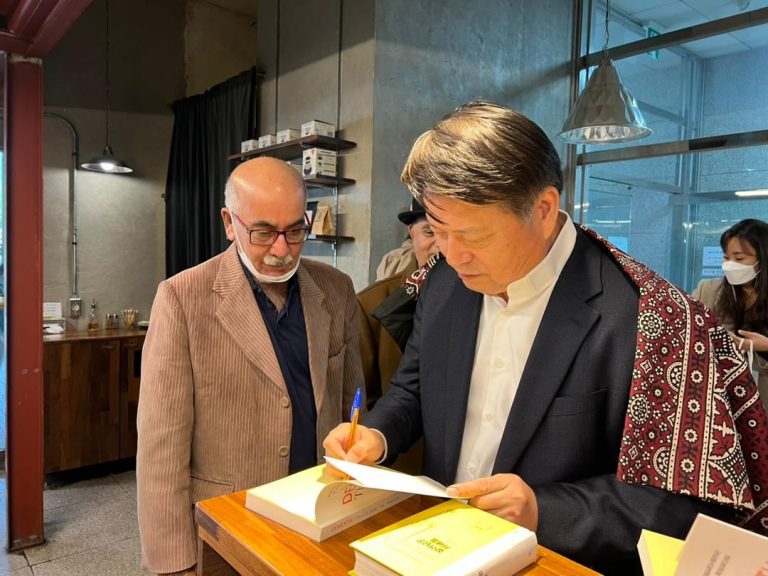
“Research is underway to enter into brain and unlock the prison and treat the dementia patients by administering the stem cells,” Jeong Chan Ra
By Nasir Aijaz
While sitting at the lunch table, in Verona restaurant, on the 5th floor of a high-rise building in Seoul, we, the overseas journalists from six countries, invited by the Asia Journalists Association for Busan World Expo 2030 Forum, had a very interesting and informative informal chat with our host Mr. Jeon Chan Ra, about the human stem cells.
Mr. Ra, who is founder and the chairman of Biostar Lab, had been researching stem cells for years, sharing his research experience and views, said smilingly, “One can regain his youth by getting administered stem cells of his own body.”
“Even a 70 year old man would feel as young as of 50 years,” he said.
Mr. Ra, who is also the author of a book on treatment of dementia through stem cells titled ‘Dementia – There is hope’, elaborated what the stem cells are, and how much work has been done so far in certain countries like USA and Japan. And he wants to see people from around the world coming to Korea for treatment through stem cell administration.

“Stem cells are the body’s raw materials — cells from which all other cells with specialized functions are generated,” he told and added, “The stem cells so got from a human’s own body when injected, they cure the disease.”
“The stem cells are taken out from the blood and injected to the patient,” he explained further about the novel way of treating various diseases like dementia and the Osteoarthritis, a chronic age-related disease that slowly destroys articular cartilage, and is one of the leading causes of disability.
Mr. Ra however said that treatment through stem cells is costly at this moment, and is not affordable for a common man.
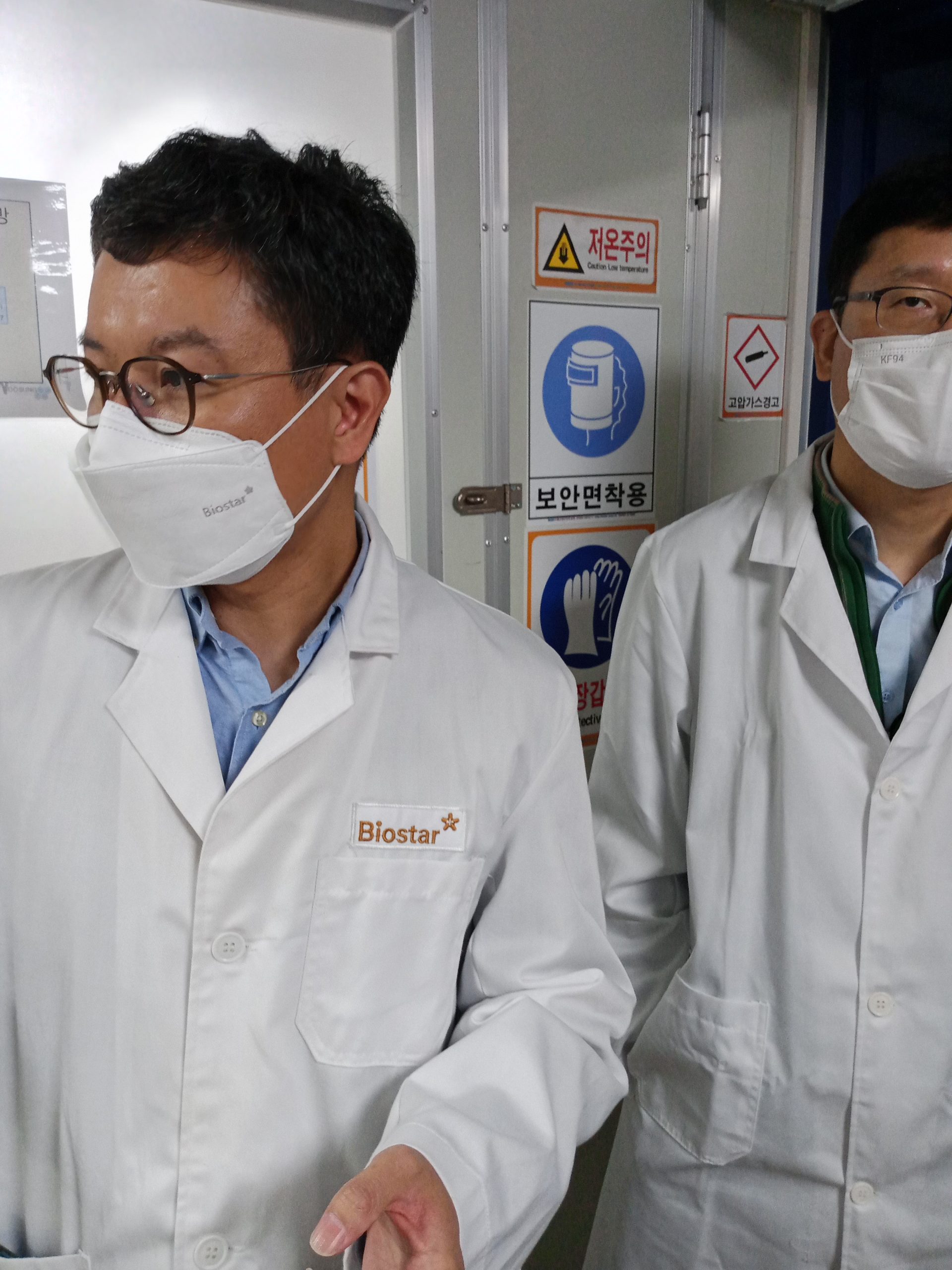 Sharing his journey of life as a researcher, Mr. Ra said he used to work for another company more than two decades back and also visited Karachi during a business trip.
Sharing his journey of life as a researcher, Mr. Ra said he used to work for another company more than two decades back and also visited Karachi during a business trip.
“I decided to set up my own business and achieved success during the last twenty years. Now, we have a lab to carry out research,” he said adding that the government has also granted permission to export our products from next year.
Mr. Ra was of the view that research works on stem cells should be expanded to other countries also. “We can set up such lab and impart training to the health professionals in other countries including Pakistan if found partners who can provide space and make investments,” he said.
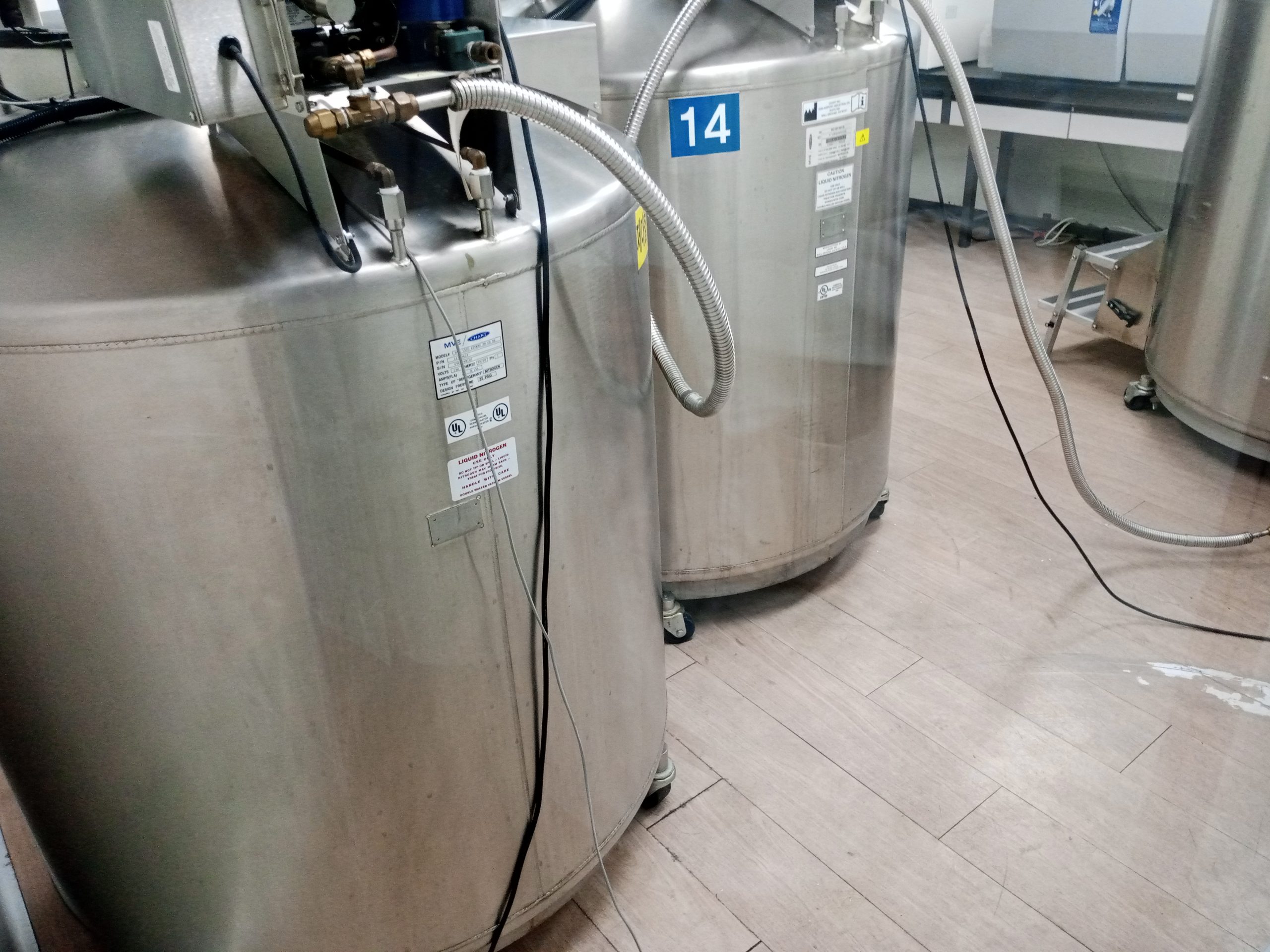 Before the lunch, we had visited the Biostar Company’s lab. In fact our day had started with a visit to Biostar Lab housed in Lotte Castle, a multistory building, located in Geumcheon-gu area of Seoul. Mr. Ra, was waiting in a coffee shop on the ground floor. After the introduction and exchange of gifts, the journalists were taken to the Biostar Lab and were briefed on the research process in different sections.
Before the lunch, we had visited the Biostar Company’s lab. In fact our day had started with a visit to Biostar Lab housed in Lotte Castle, a multistory building, located in Geumcheon-gu area of Seoul. Mr. Ra, was waiting in a coffee shop on the ground floor. After the introduction and exchange of gifts, the journalists were taken to the Biostar Lab and were briefed on the research process in different sections.
Soon after the lunch we proceeded to another destination. The 10th November was devoted mainly to visit the Biostar Lab and Display Center of Hyundai Motor Company besides a trip to DMZ (Demilitarized Zone between North and South Korea), in Imjingak area, which has been turned into a tourist spot where thousands of domestic as well as foreign tourists used to visit daily. And before visiting the Hyundai Motor Company’s display center, we were heading to DMZ in Imjingak area for sightseeing. No official meetings, just for enjoyment. This site was not new for me, as I had been here twice during previous trips to Korea, but it was amazing to see how this spot has been maintained to attract the tourists from around the world.
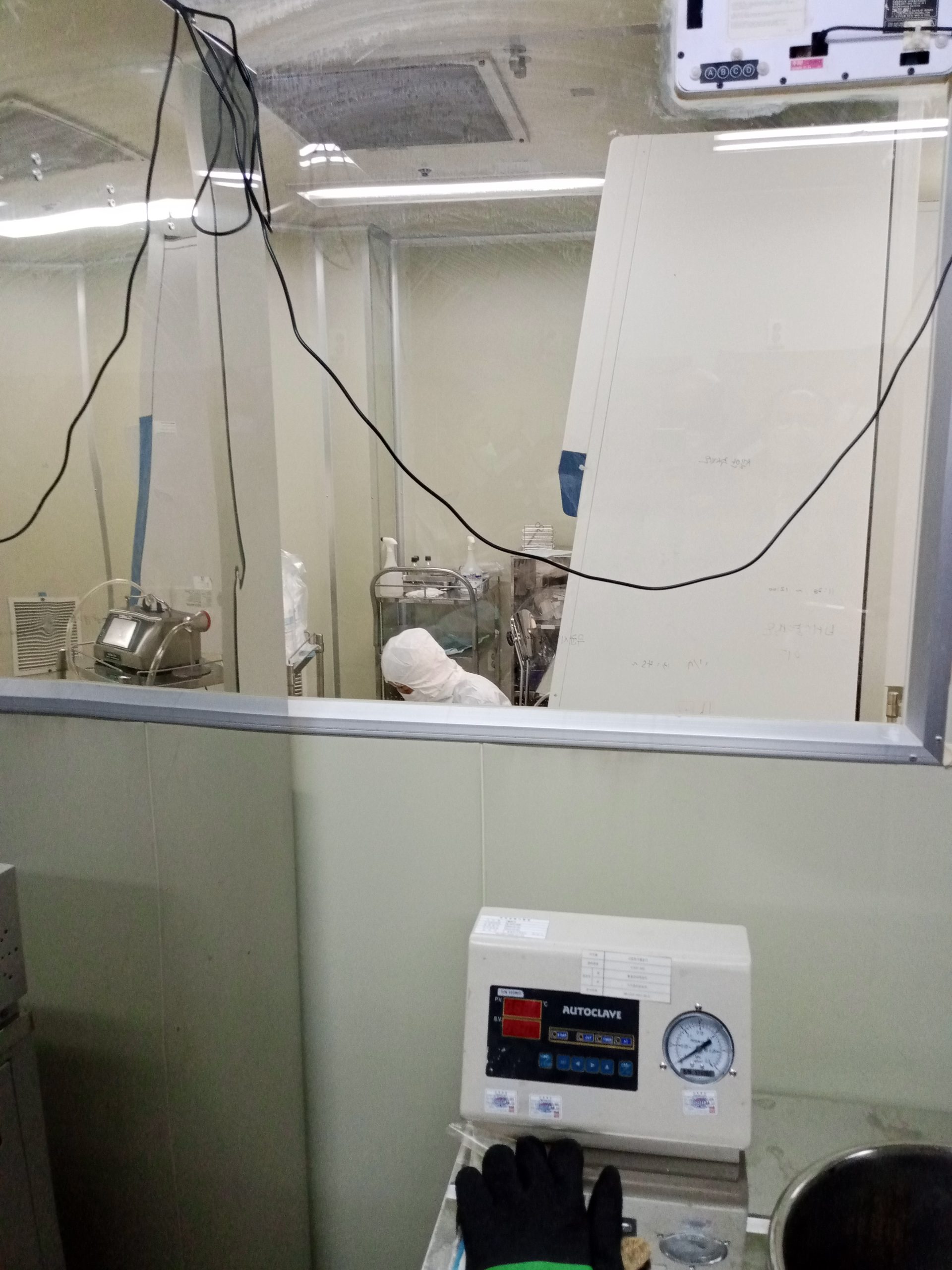 The gift bag given by Mr. Ra, also contained the book authored by him, I took it out to have a look. On page 5 he writes, “Research on prevention and treatment of dementia through stem cells has been very slow contrary to the expectations because the task requires access to the brain, which is most difficult area of the human body. Research is being conducted on how stem cells can play a role in damaged or shrinking cells of our brain.”
The gift bag given by Mr. Ra, also contained the book authored by him, I took it out to have a look. On page 5 he writes, “Research on prevention and treatment of dementia through stem cells has been very slow contrary to the expectations because the task requires access to the brain, which is most difficult area of the human body. Research is being conducted on how stem cells can play a role in damaged or shrinking cells of our brain.”
One of the chapters of the book was titled “Let’s travel together to the brain where the seeds of dementia are sown”. The book looked very informative, as it also cited examples with photographs of healing of wounds on a diabetic foot.
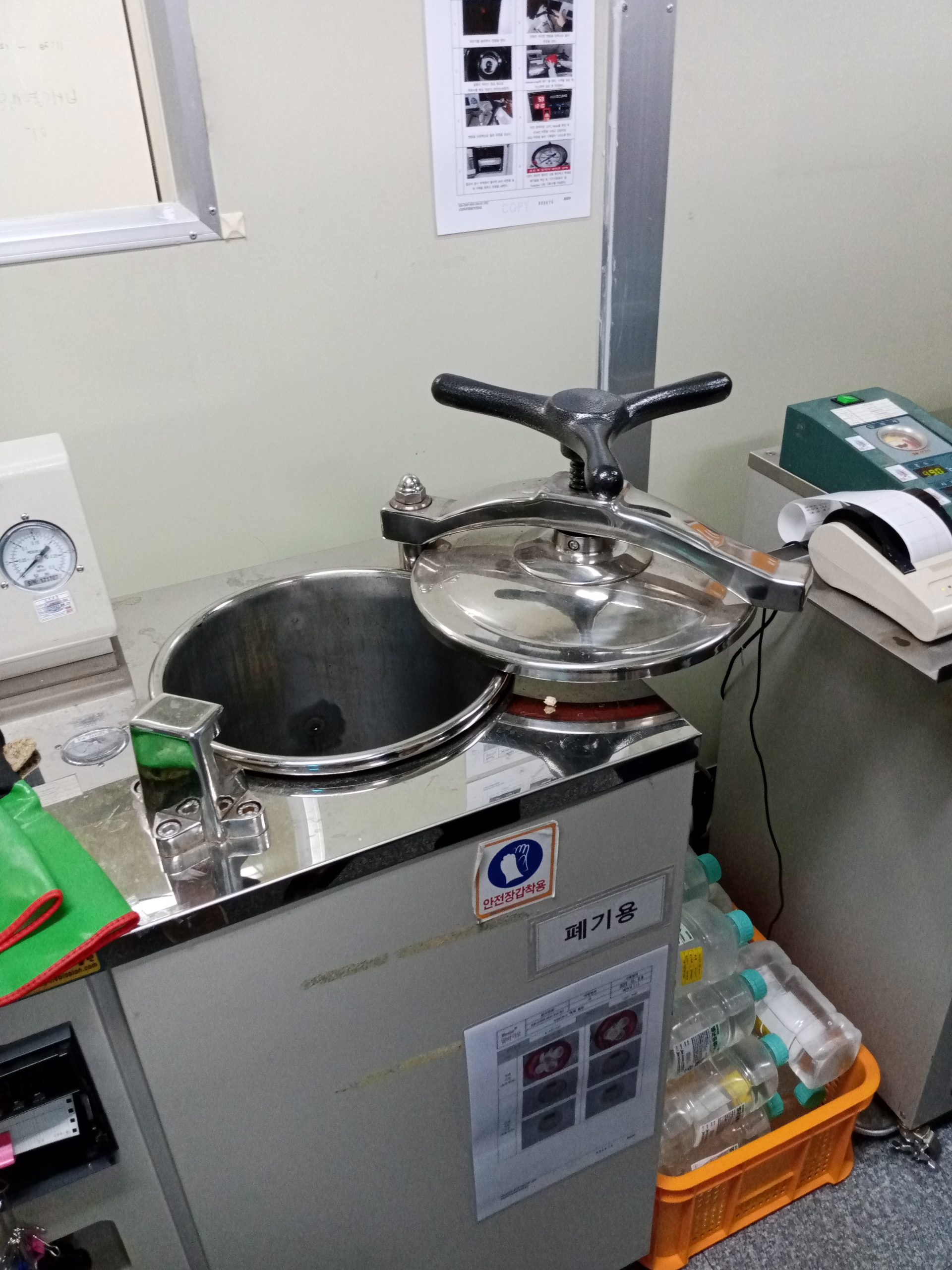 Mr. Ra, winner of several awards, writes in concluding pages, “Dementia turns a human brain into a prison, where memories are locked up. But even if you are locked up in a prison of dementia or in an actual prison, there is hope.”
Mr. Ra, winner of several awards, writes in concluding pages, “Dementia turns a human brain into a prison, where memories are locked up. But even if you are locked up in a prison of dementia or in an actual prison, there is hope.”
He used the word ‘actual prison’ because he himself had experienced the imprisonment during which he conceived the idea of researching on stem cells after reading a lot of literature on the subject in the prison and was inspired by it. The entire book is in a form of letters which he wrote to his wife from the prison.
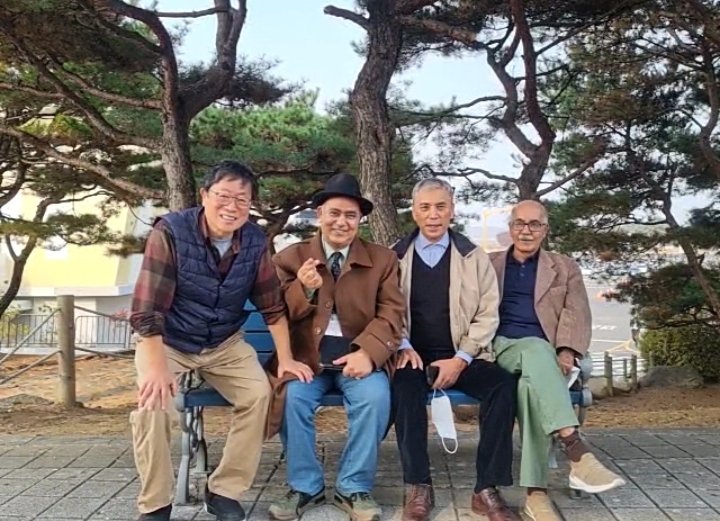
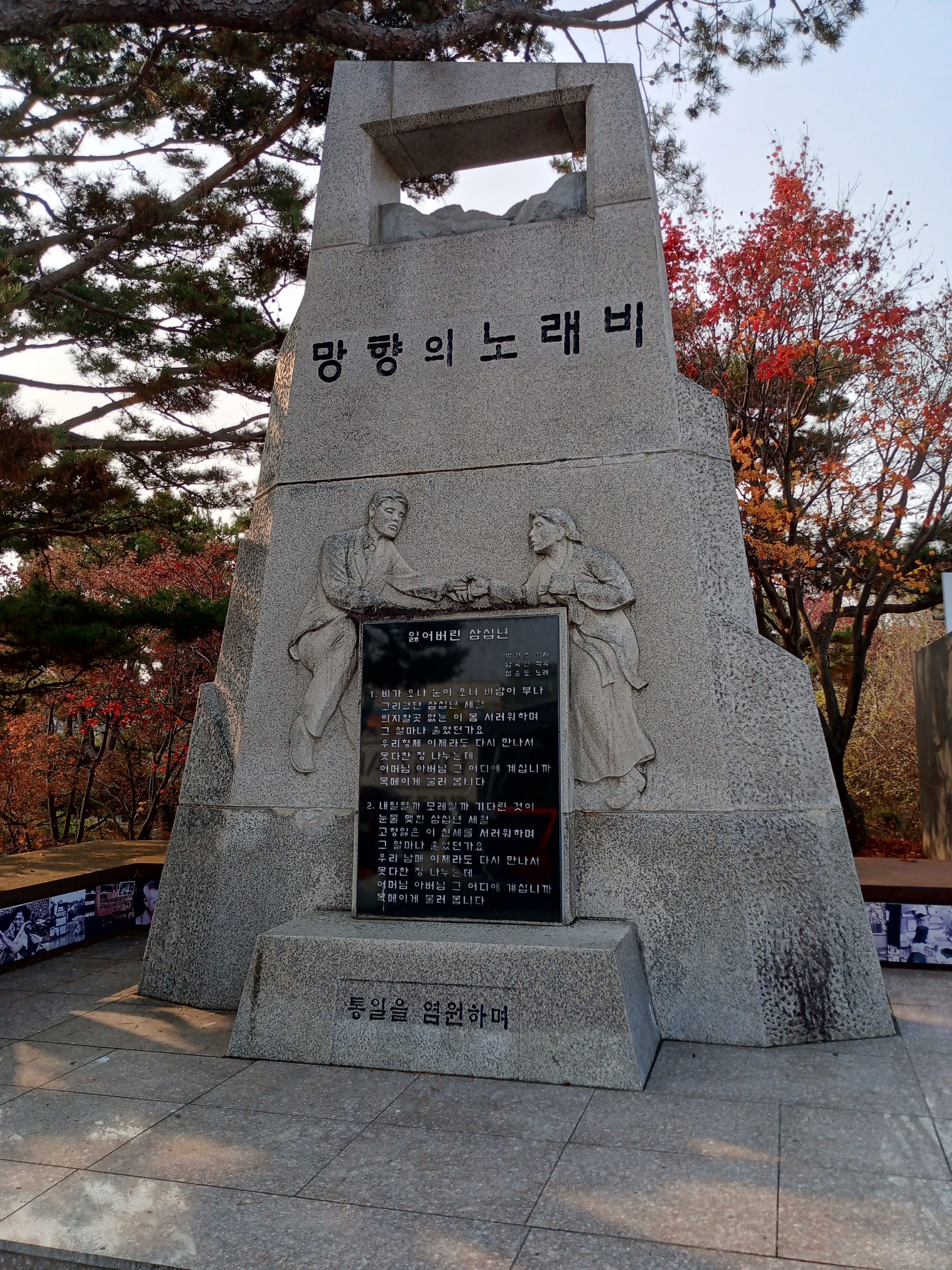
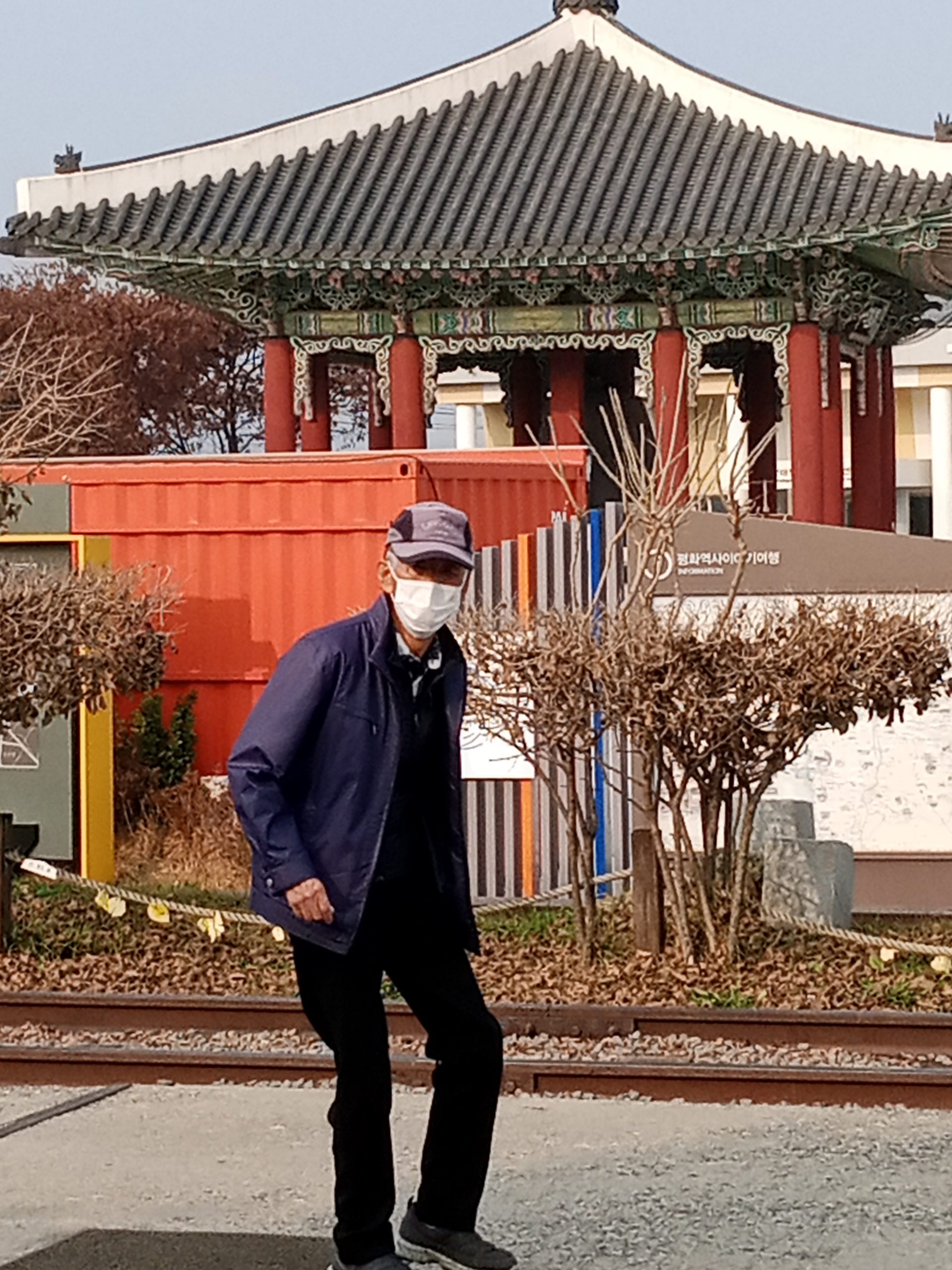
While randomly reading some pages of the book, we reached DMZ where a large number of tourists were there to enjoy the facilities. Some new additions I witnessed included a Buddhist temple and the chair-lifts among others. Although there was an observatory to have a look at the North Korean side but the chair-lifts provided an opportunity to have a closer look over the region.
While strolling the area, we met a big group of school children who welcomed me with clapping when I told them that this was my sixth trip to Korea and third to DMZ.
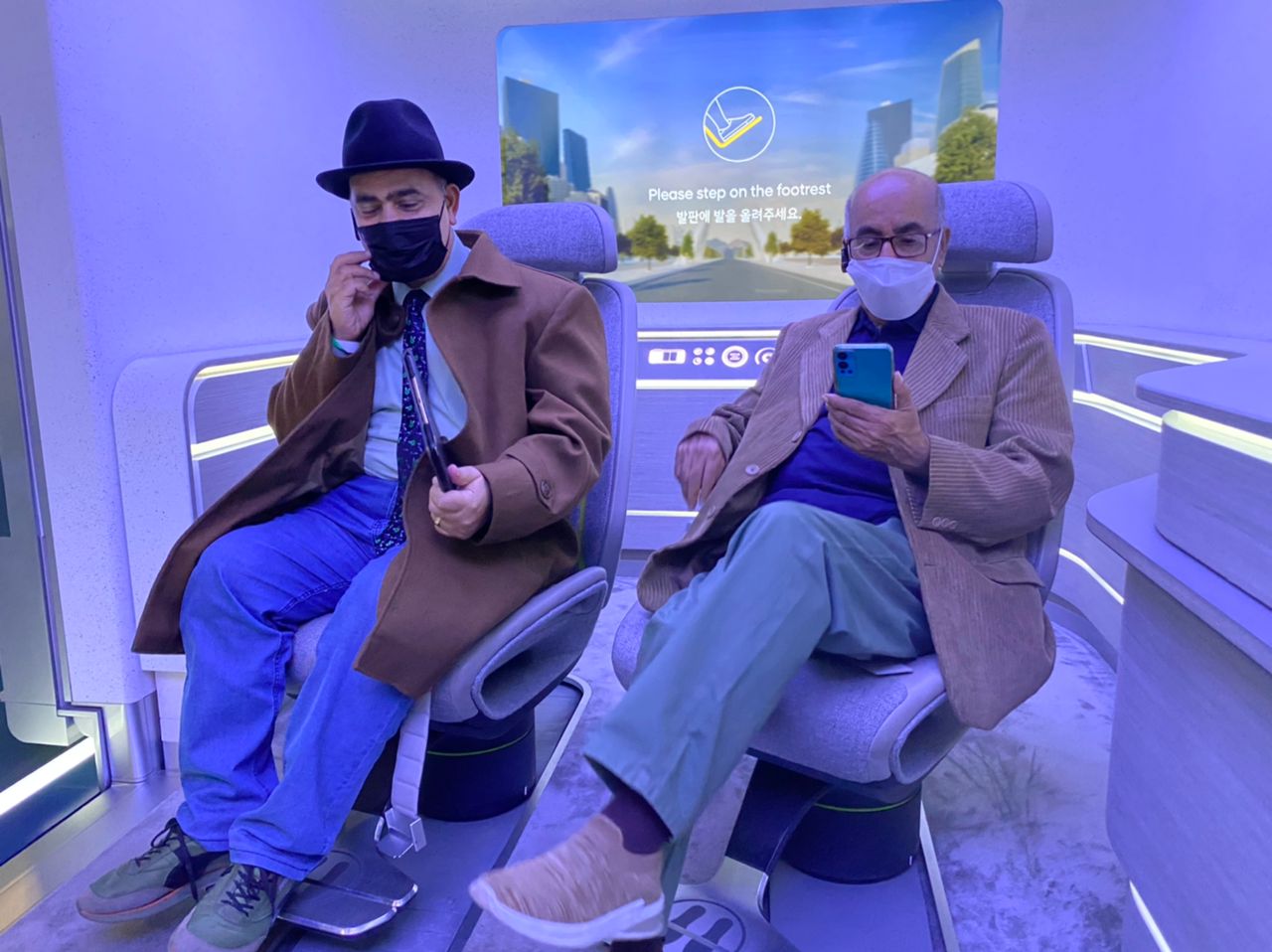
By the evening we drove to Hyundai Display Complex, a huge multi-storied building. On the way to Hyundai Complex, I felt mesmerized by the beauty of river called Imjin River in South Korea and Rimjin River in North Korea and is the 7th largest river in Korea. It flows from north to south, crossing the Demilitarized Zone and joining the Han River downstream of Seoul, near the Yellow Sea.
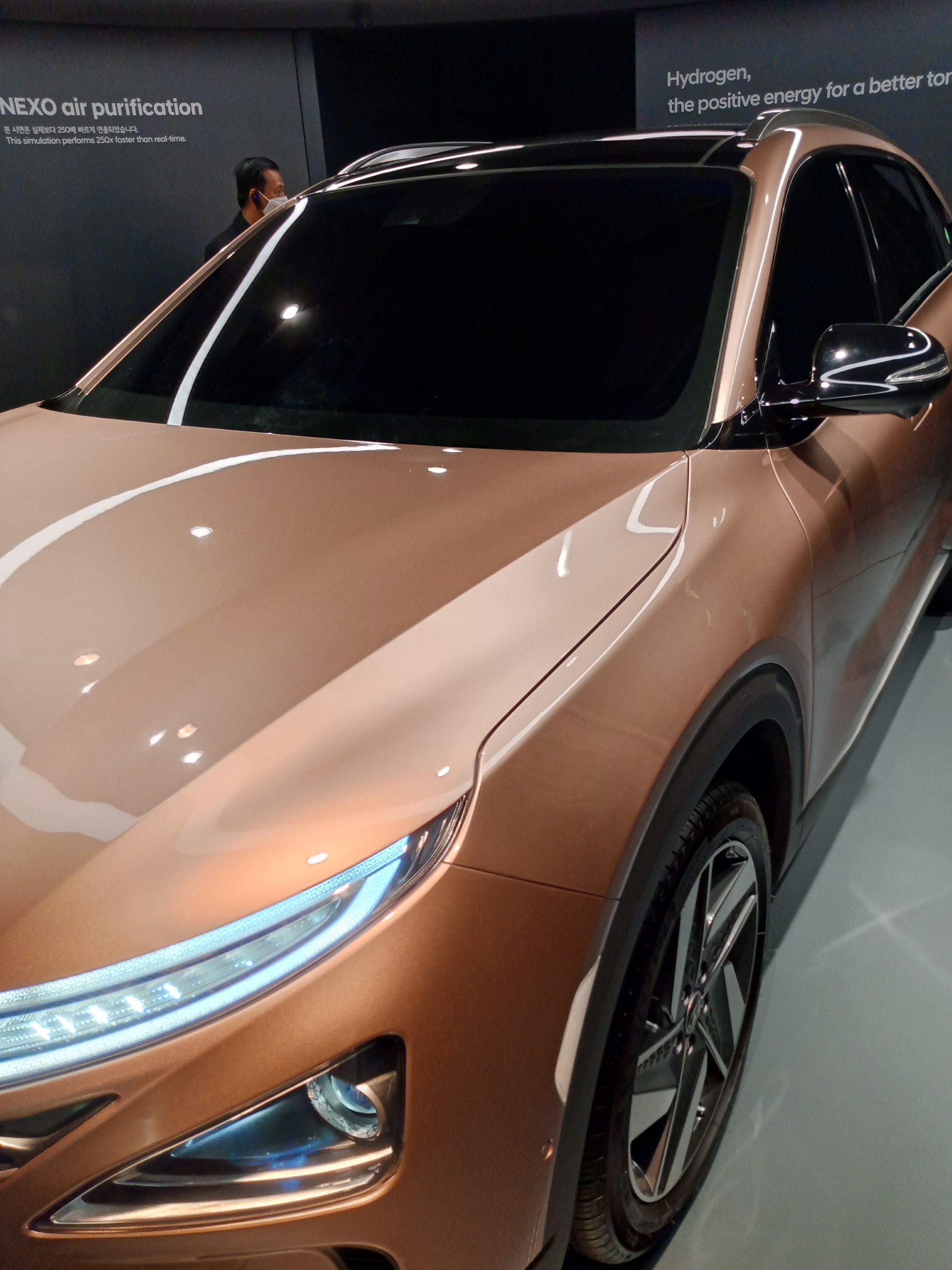
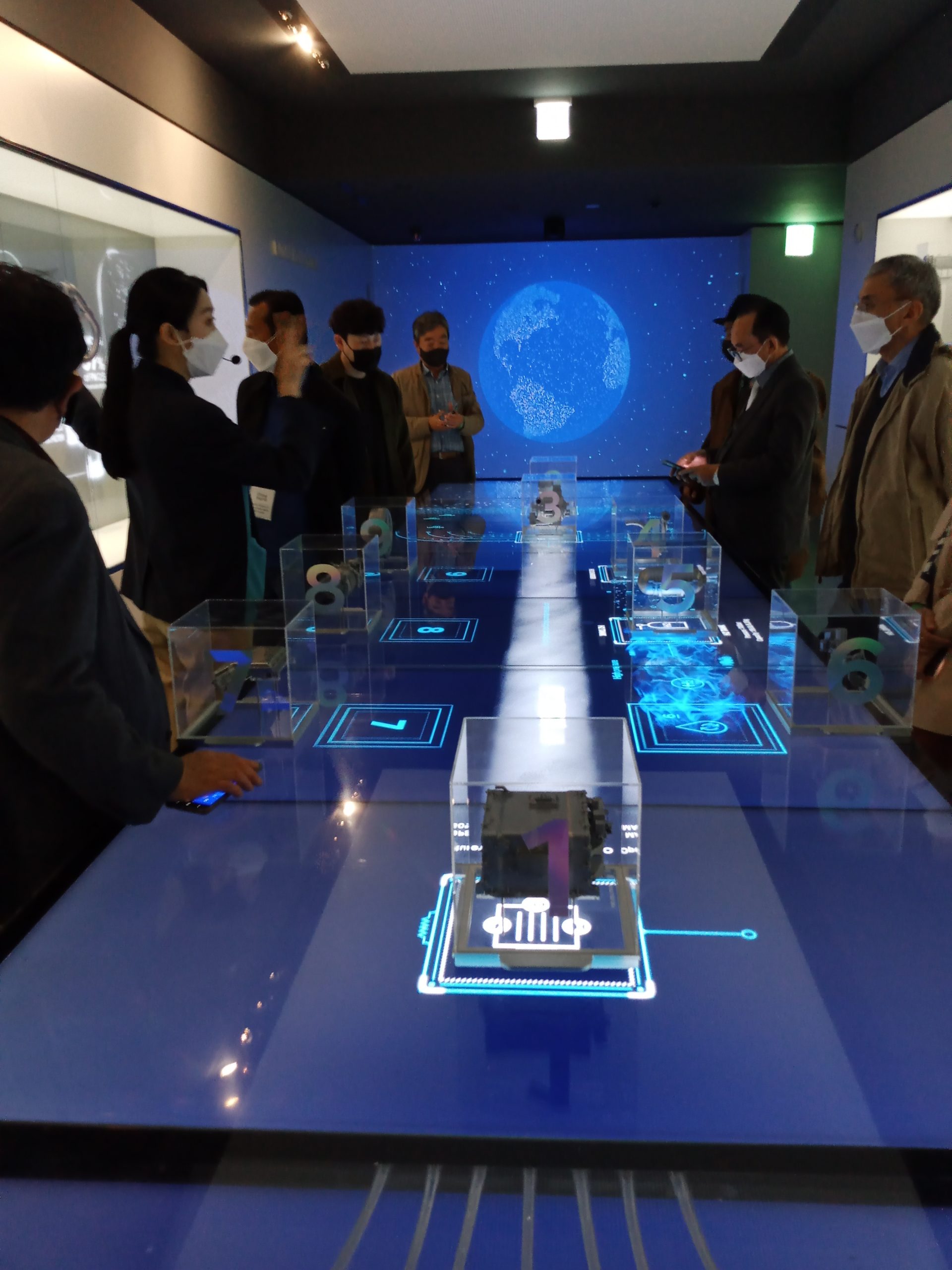
At Hyundai Display Center, we were taken around different sections to witness the car-making process right from steel-manufacturing to molding of sheets as per designed frame of cars, use of robots in car-making etc. One of the amazing inventions was the manufacturing of hydrogen cars. A lady elaborated the entire process of functioning of the hydrogen car. Our tour concluded with a 3-D car show and ride in a future vision car – a driverless car – just sit in the car with three other companions, push the buttons and start roaming the city roads while chatting with friends.
____________________
Nasir Aijaz is a senior journalist and Chief Editor of Sindh Courier, based in Karachi, Sindh, Pakistan.